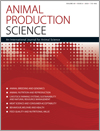Ver ítem
- xmlui.general.dspace_homeCentros e Institutos de InvestigaciónCIA. Centro de Investigaciones de AgroindustriaInstituto de Tecnología de AlimentosArtículos científicosxmlui.ArtifactBrowser.ItemViewer.trail
- Inicio
- Centros e Institutos de Investigación
- CIA. Centro de Investigaciones de Agroindustria
- Instituto de Tecnología de Alimentos
- Artículos científicos
- Ver ítem
Meat quality traits and feeding distillers grains to cattle: a review
Resumen
Livestock management and meat production involve a series of steps that affect meat quality. Animal genetics, nutrition and diets, slaughter procedures and meat-preservation conditions are some of the parameters that should be controlled to maintain meat quality. In regard to animal nutrition and diets, novel ingredients are increasingly used, distillers grains (DG) being an example. DG are obtained as a co-product from bioethanol production and comprise
[ver mas...]
Livestock management and meat production involve a series of steps that affect meat quality. Animal genetics, nutrition and diets, slaughter procedures and meat-preservation conditions are some of the parameters that should be controlled to maintain meat quality. In regard to animal nutrition and diets, novel ingredients are increasingly used, distillers grains (DG) being an example. DG are obtained as a co-product from bioethanol production and comprise the fat, protein, fibre and micronutrient portion of the grains. Many papers have studied the inclusion of DG in finishing diets and their effect on growth performance and meat characteristics, but a review on the effects on meat quality is needed. Feeding with DG influences beef colour; nevertheless, a relationship between the level of inclusion and colour development has not been established yet. In addition, feeding DG-inclusion diets sometimes increases meat discoloration during retail display. Also, the composition of fatty acids is modified since total polyunsaturated fatty acid content in meat increases with the inclusion of DG in finishing diets. This increment in polyunsaturated fatty acid content is likely to contribute to lipid oxidation processes and might be related to meat discoloration due to myoglobin oxidation. However, meat tenderness has not been modified in most of the cases. This review focused on recent studies on DG inclusion, animal performance and meat quality. Key points that need further research are also identified and discussed.
[Cerrar]

Autor
Merayo, Manuela;
Pighin, Darío Gabriel;
Grigioni, Gabriela Maria;
Fuente
Animal production science 60 (5). (12 March 2020)
Fecha
2019-12-04
ISSN
1836-0939
1836-5787 (Online)
1836-5787 (Online)
Formato
pdf
Tipo de documento
artículo
Palabras Claves
Derechos de acceso
Restringido
 Excepto donde se diga explicitamente, este item se publica bajo la siguiente descripción: Creative Commons Attribution-NonCommercial-ShareAlike 2.5 Unported (CC BY-NC-SA 2.5)
Excepto donde se diga explicitamente, este item se publica bajo la siguiente descripción: Creative Commons Attribution-NonCommercial-ShareAlike 2.5 Unported (CC BY-NC-SA 2.5)

